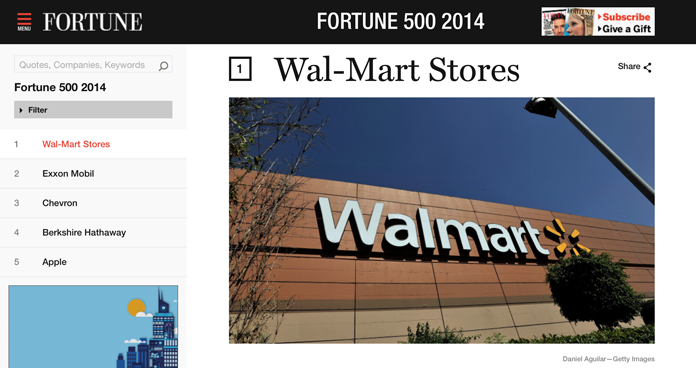As the newly standalone Time Inc. looks to cut costs by 25 percent and media writers [Bloomberg, The Atlantic, Nieman Lab] outline the magazine publisher’s tenuous digital prospects, Fortune and Money have made 31 hires in recent months with one clear editorial strategy in mind: Publish more articles. A lot more.
Fortune is tripling the amount of content it publishes — up to 90 pieces per day. Money, meanwhile, is publishing about 20 to 30 pieces of content per day, the same amount it used to publish in an entire month. (Time.com has roughly doubled its output recently, too.)
The two financial magazines officially divorced from CNN last week due to the Time Inc. spinoff, launching new websites based on the platform for the recently redesigned Time.com.
Splitting off from their former home, CNNMoney, means Fortune and Money are taking full control of their digital presences. But that flexibility comes at the cost of losing referrals from CNN, one of the largest news brands on the Web. So the pressure to make up for any lost eyeballs seems to be on.
Time Inc. group publisher Jed Hartman told Poynter that although the CNN traffic “firehose” is gone, ending the CNN partnership doesn’t mean a free flow of traffic has just disappeared. Previously, CNN provided Fortune and Money with a “scientific amount of referrals, and we paid them money,” Hartman said. He claims Time Inc.’s plan for more cross-brand collaboration will help counter the loss of CNN referrals over time, and more content, particularly of the built-for-social variety, should bring some extra traffic.
CNN posted about 68 million unique visitors in January, while Time had 23 million, according to figures the companies provided me for past stories. CNNMoney saw 17.6 million unique visitors in April, but Time Inc. couldn’t break down how many of those were visits to Fortune or Money.
-

- The old Fortune homepage, left, when it was part of CNN Money, and the new standalone homepage, right, on an iPhone. The new site is less dense and more mobile-friendly.
CNN, of course, will miss out on traffic due to the split, too: eight of CNNMoney’s top 15 traffic days last year can be attributed to Fortune and Money franchises. Money’s Best Places to Live and Fortune’s Best Companies to Work for accounted for CNNMoney’s top two traffic days in 2013.
Now those popular franchises have more nimble homes, breaking free of CNN’s design and content constraints. Fortune editor Andy Serwer told Poynter that although the CNN partnership had its advantages, “it didn’t really let us fully optimize Fortune in the digital space.” For instance, this year’s Fortune 500, which debuted last week alongside the new Fortune.com, can now take advantage of the left-rail navigation implemented by Time earlier this year (Big Human is the design studio behind the relaunches):
Money editor Craig Matters said his magazine’s new online home as a channel of Time.com will be a better fit Money’s content goals. “The mission [at CNN] is to feed the news beast. Things have a lifespan there on the homepage that’s measured in minutes,” but the new site allows Money to do more with big ideas, Matters said.
But Fortune and Money are also doubling down on smaller ideas. Many of their daily pieces won’t be 1,000 words or more: they’ll be 400-word pieces or interactive features instead. And they’ll be more shareable, like this Money quiz that matches the reader’s money style with famous TV couples.
(Time has also drastically upped its quantity of articles over the last year, with Web-friendly lists and such — some of which feel like clickbait. Yeah, Time is now yet another place where you can see a bulldog puppy kiss a baby and what a kiss looks like from inside a mouth.)
Matters said Money has hired seven journalists in recent months, with more hires to come. Fortune, which will also now have a near 24/7 news desk with editors in New York, San Francisco and London, has made 24 hires, despite about 500 Time Inc. layoffs related to becoming a standalone public company.
Related: Time.com website redesign: ‘There’s a lot of text, and that’s intentional’







